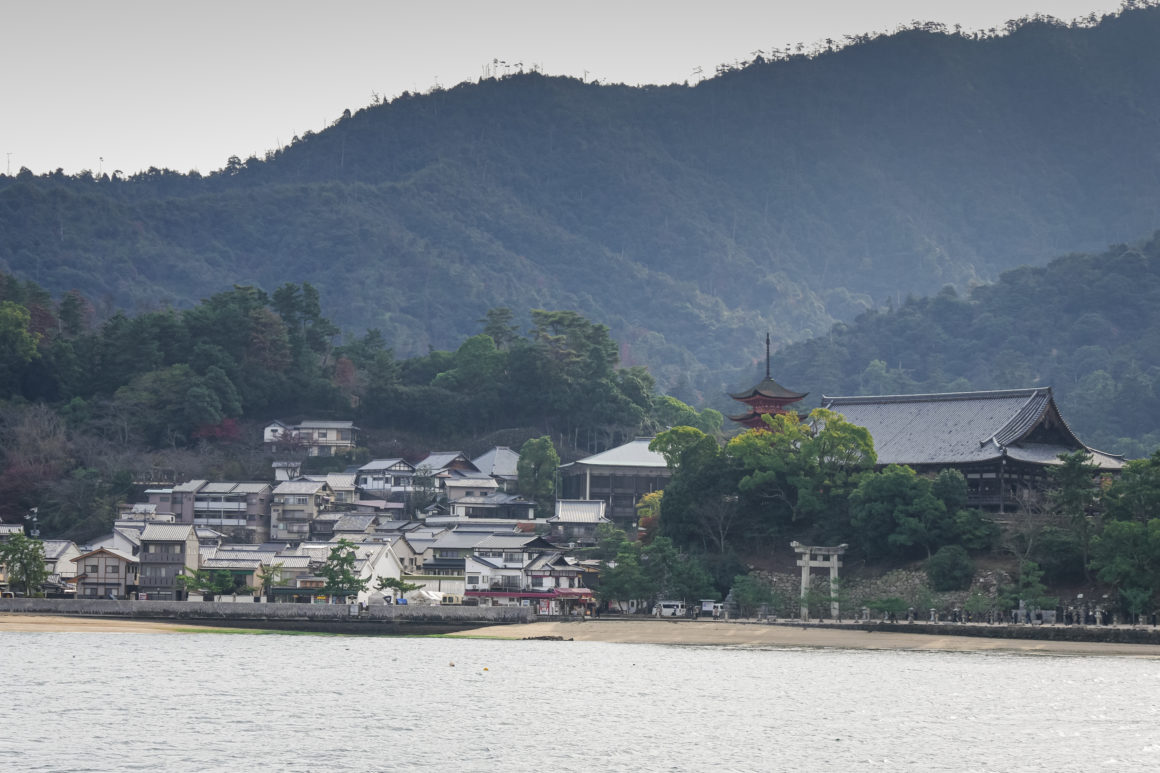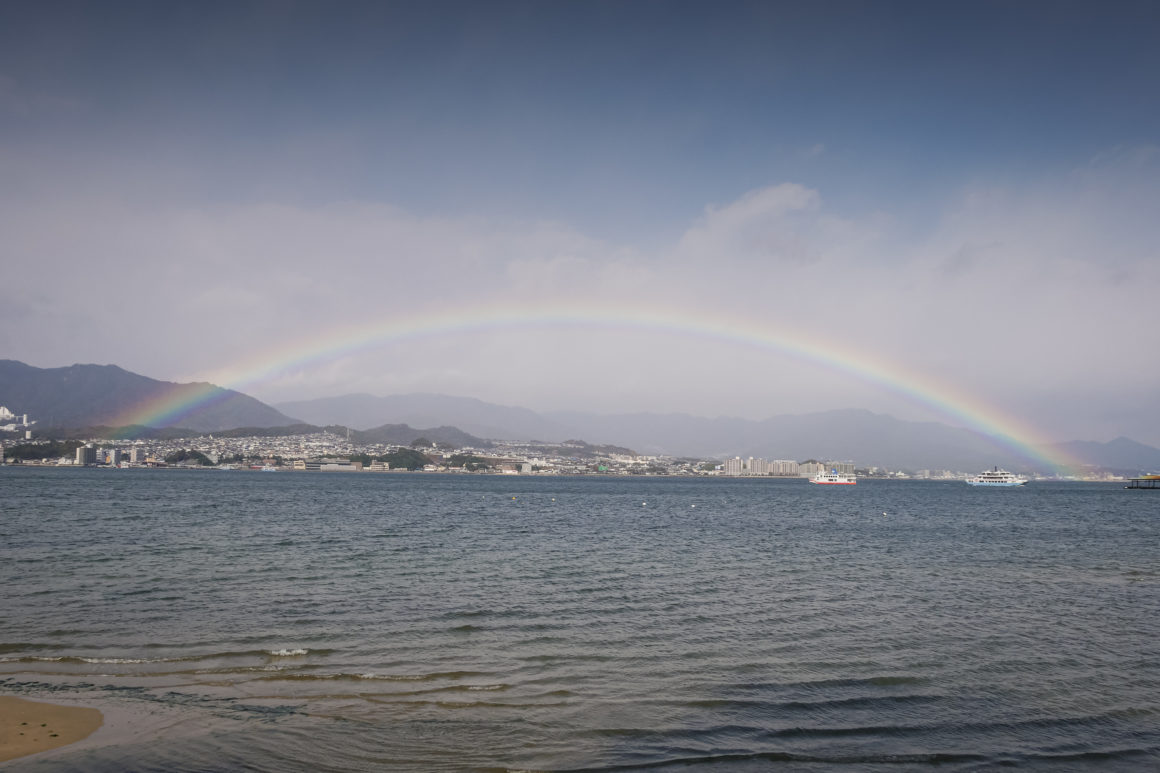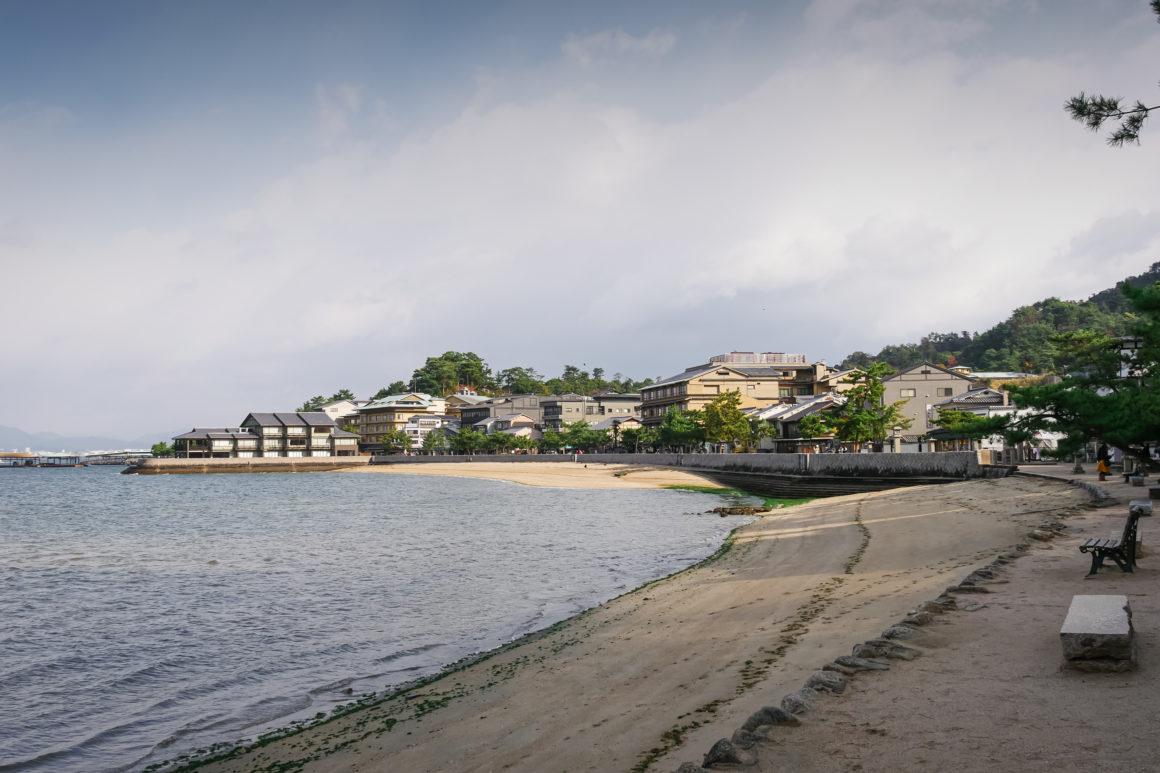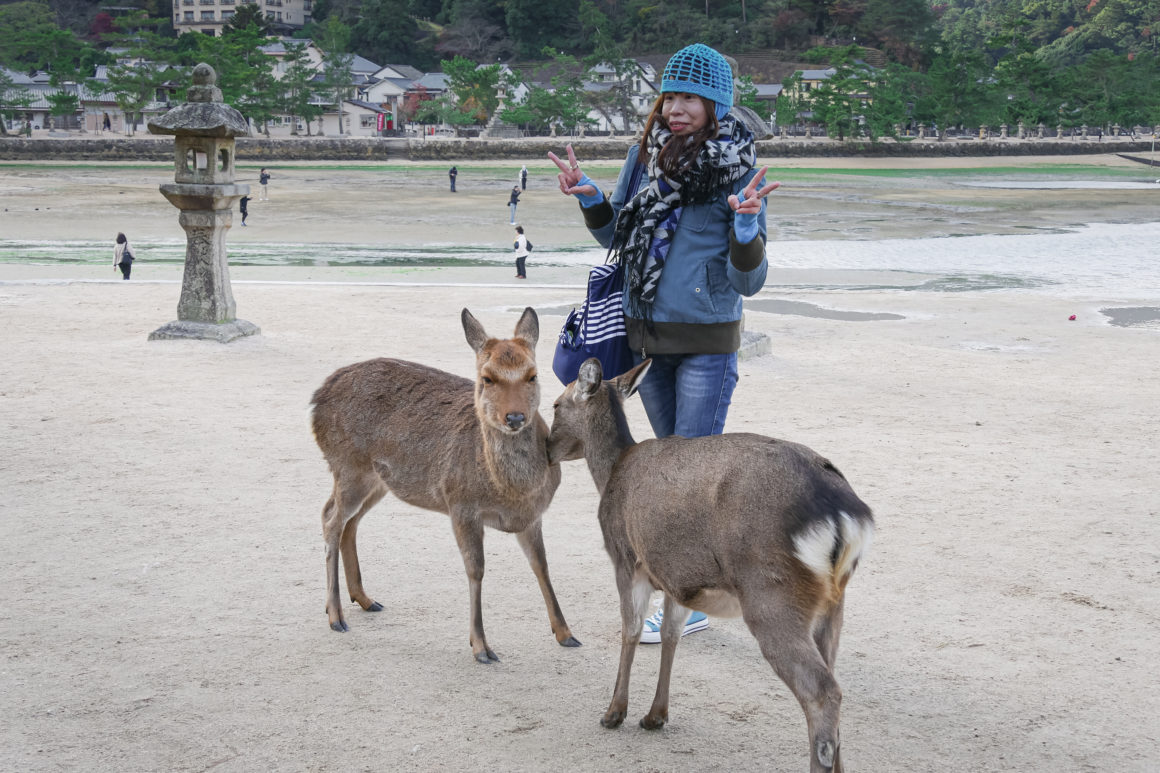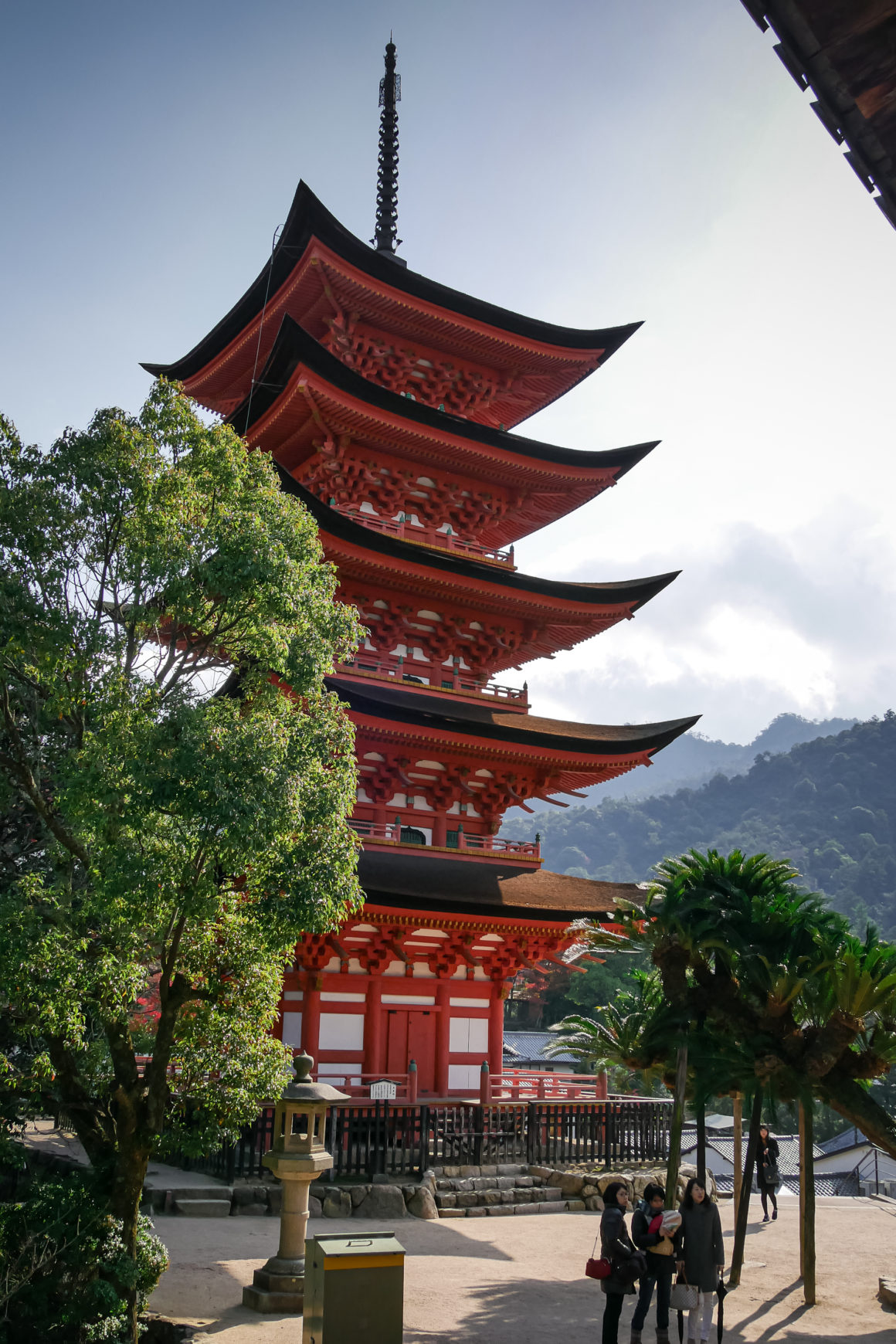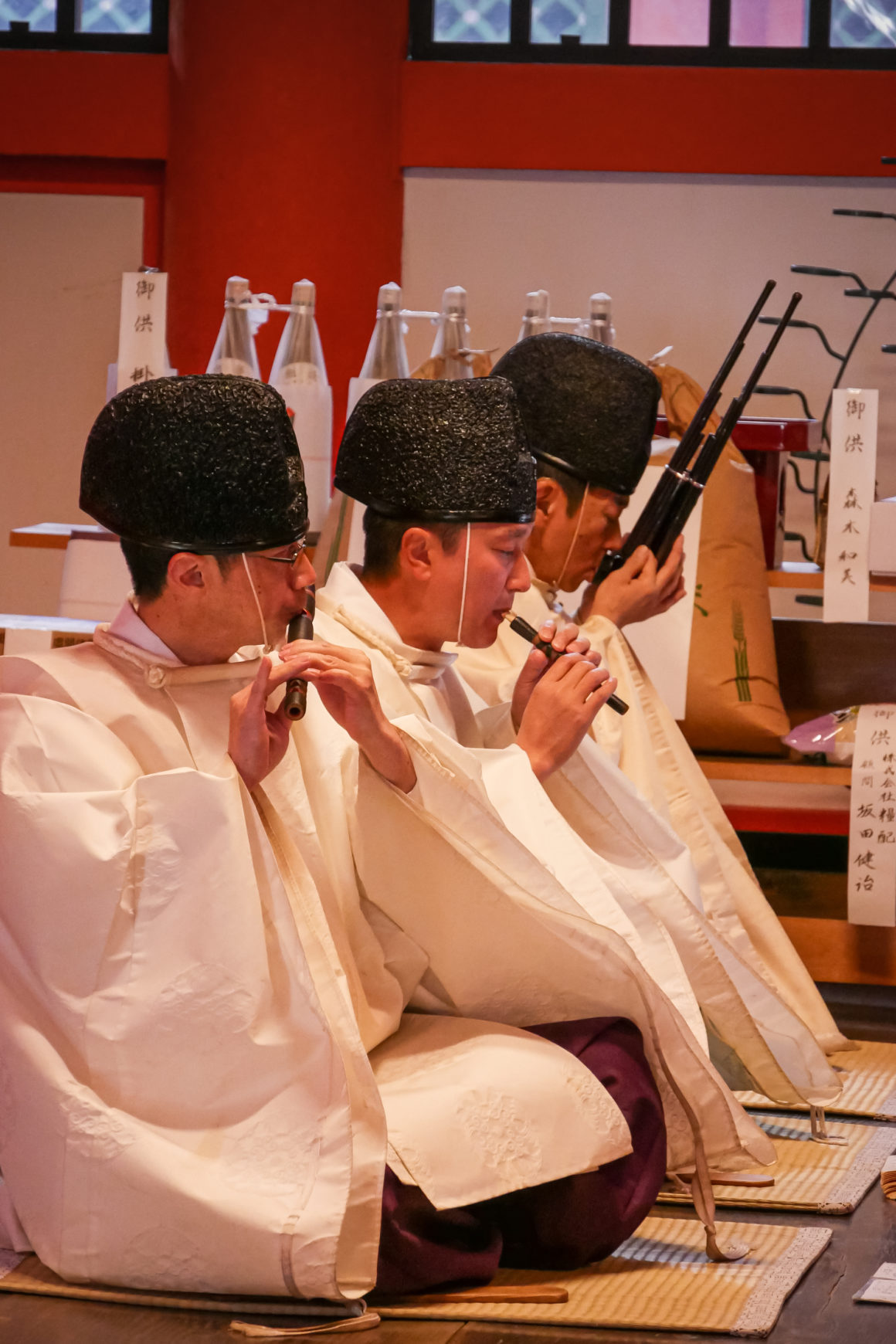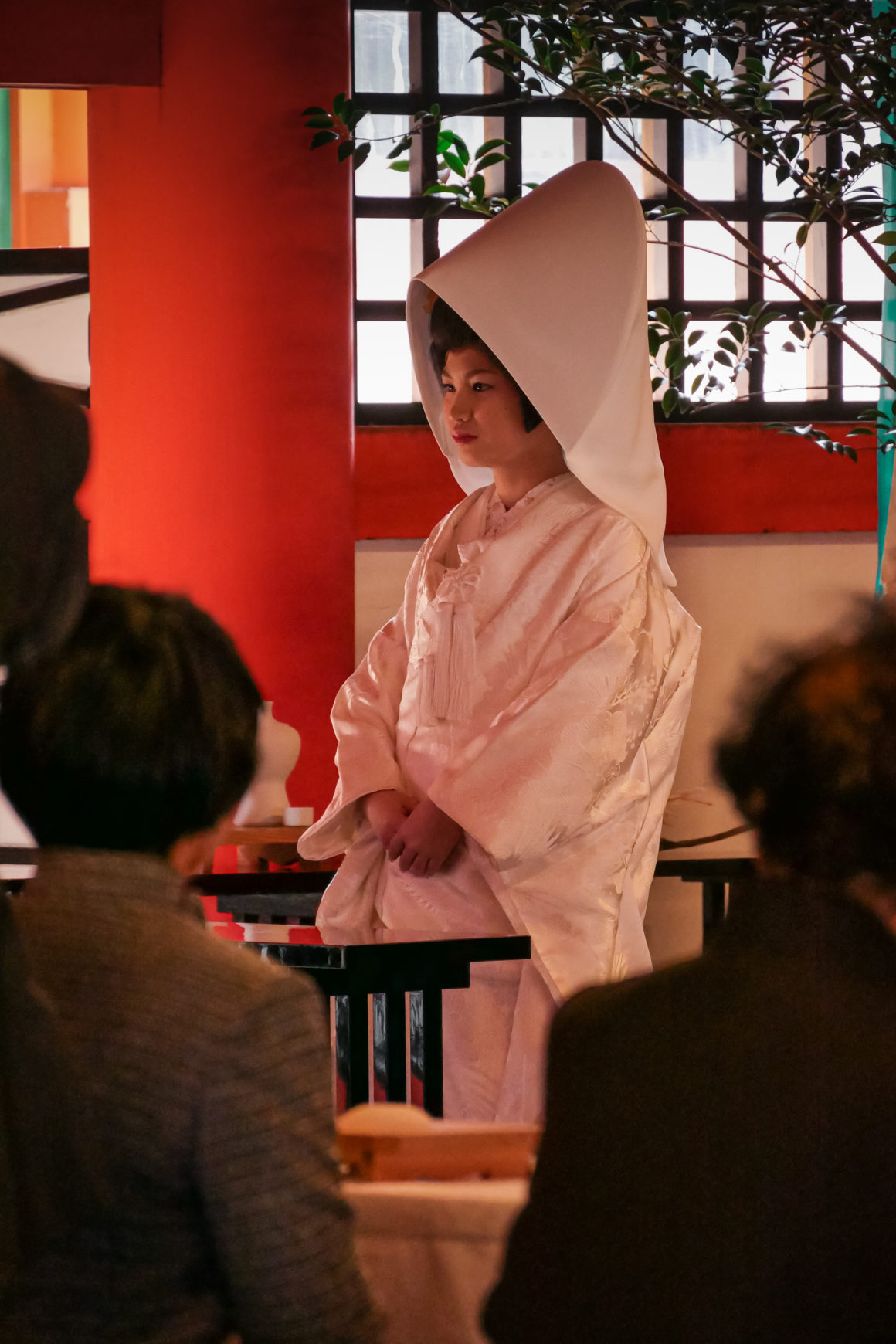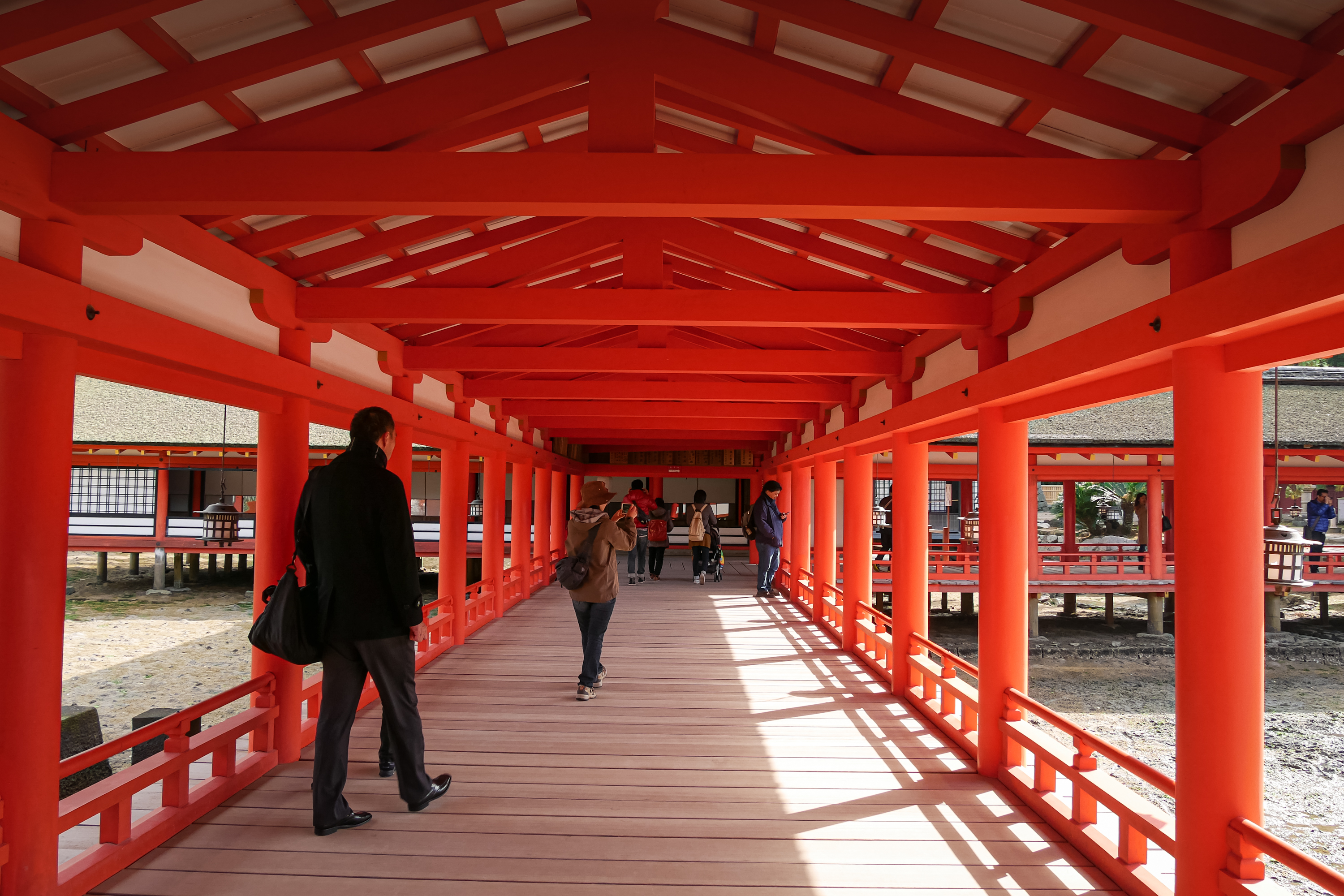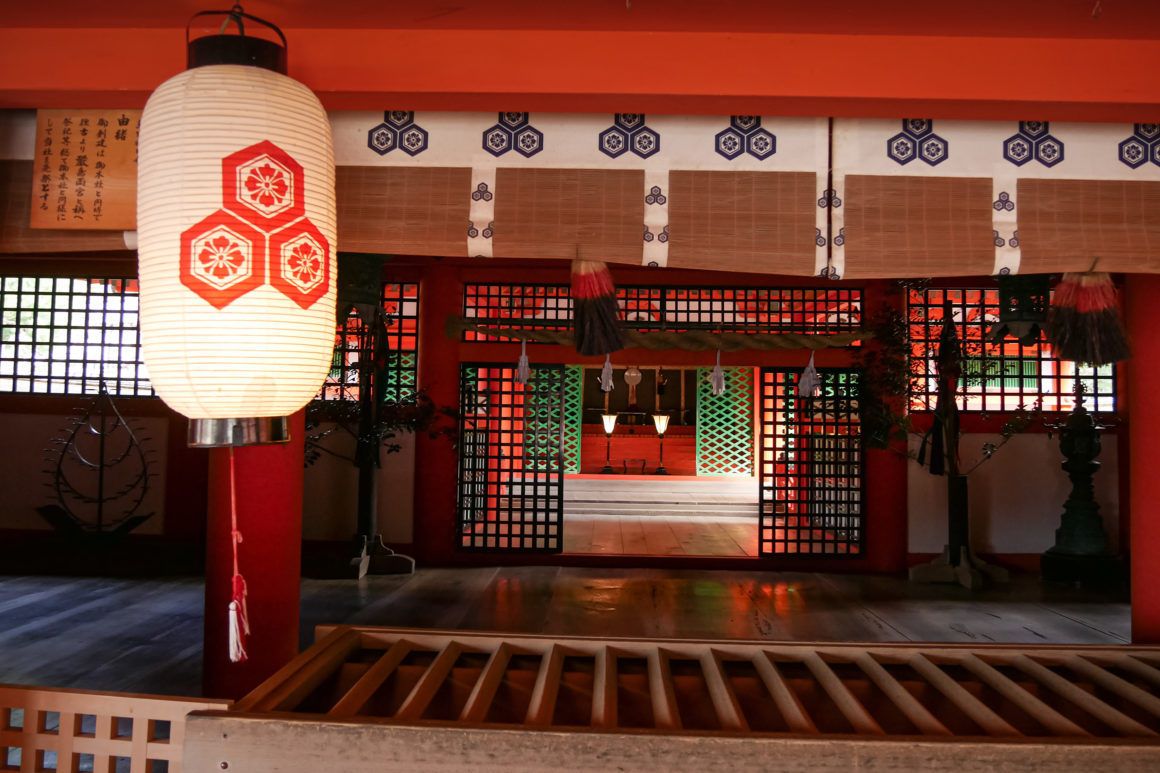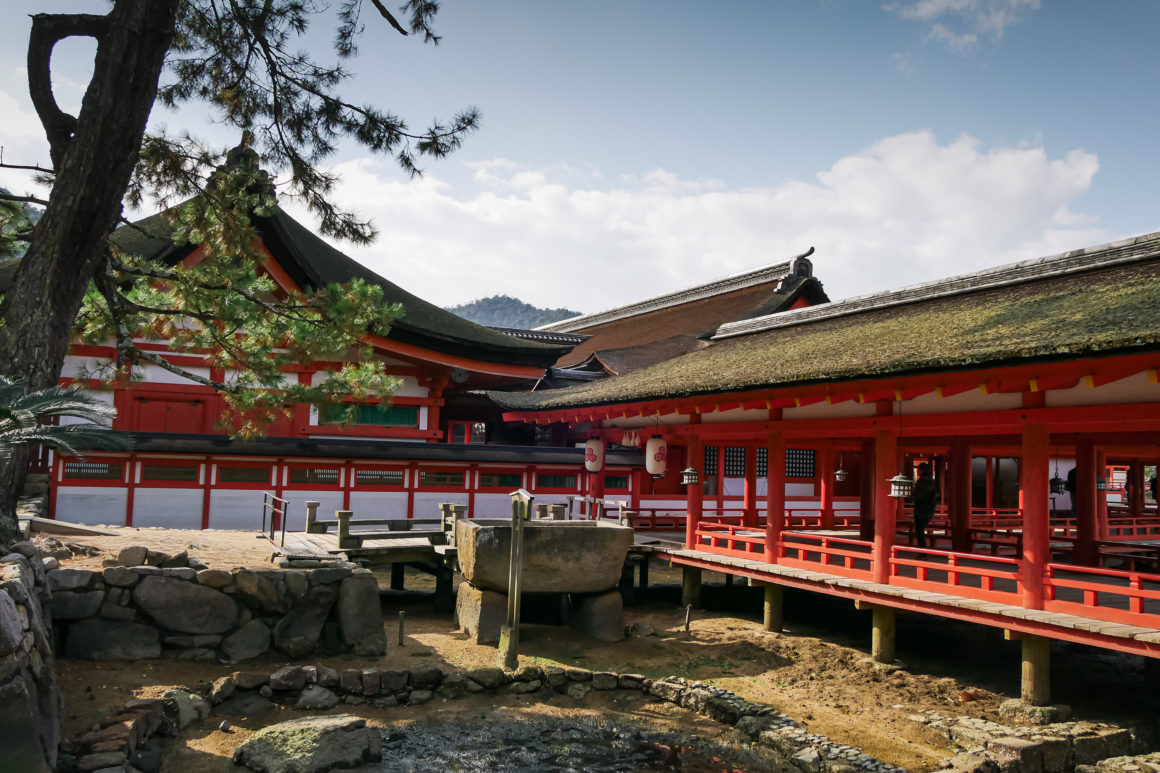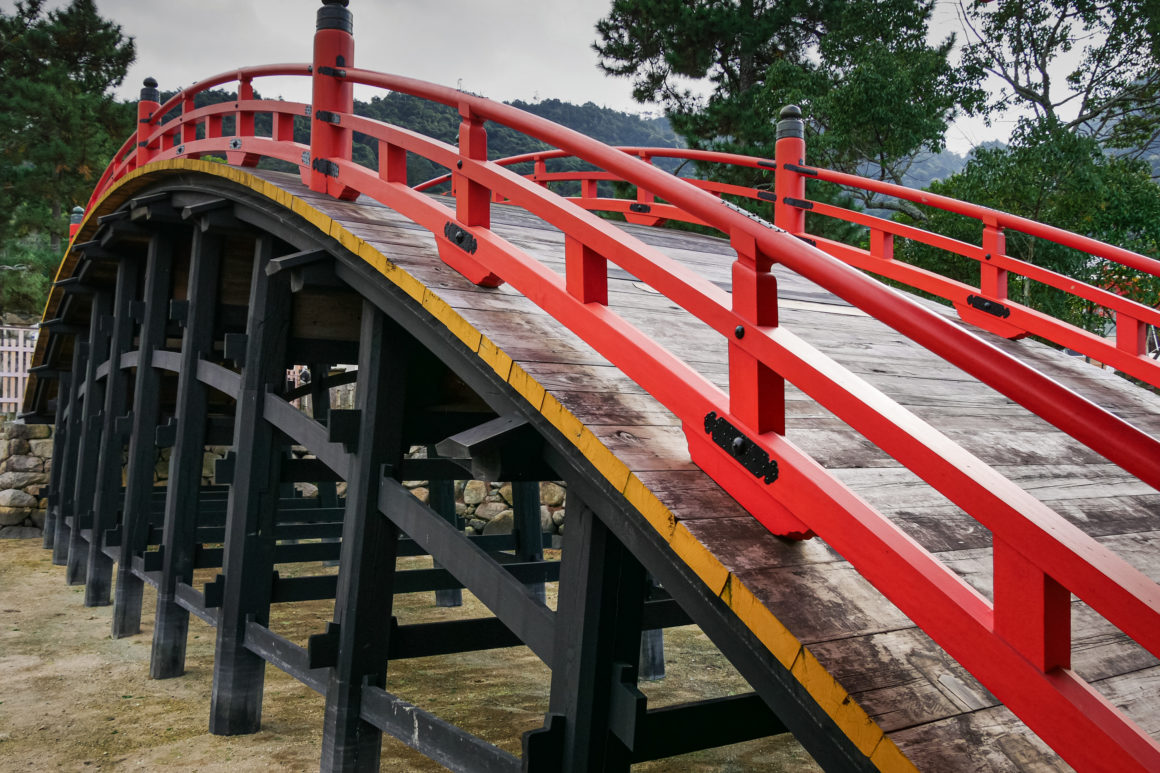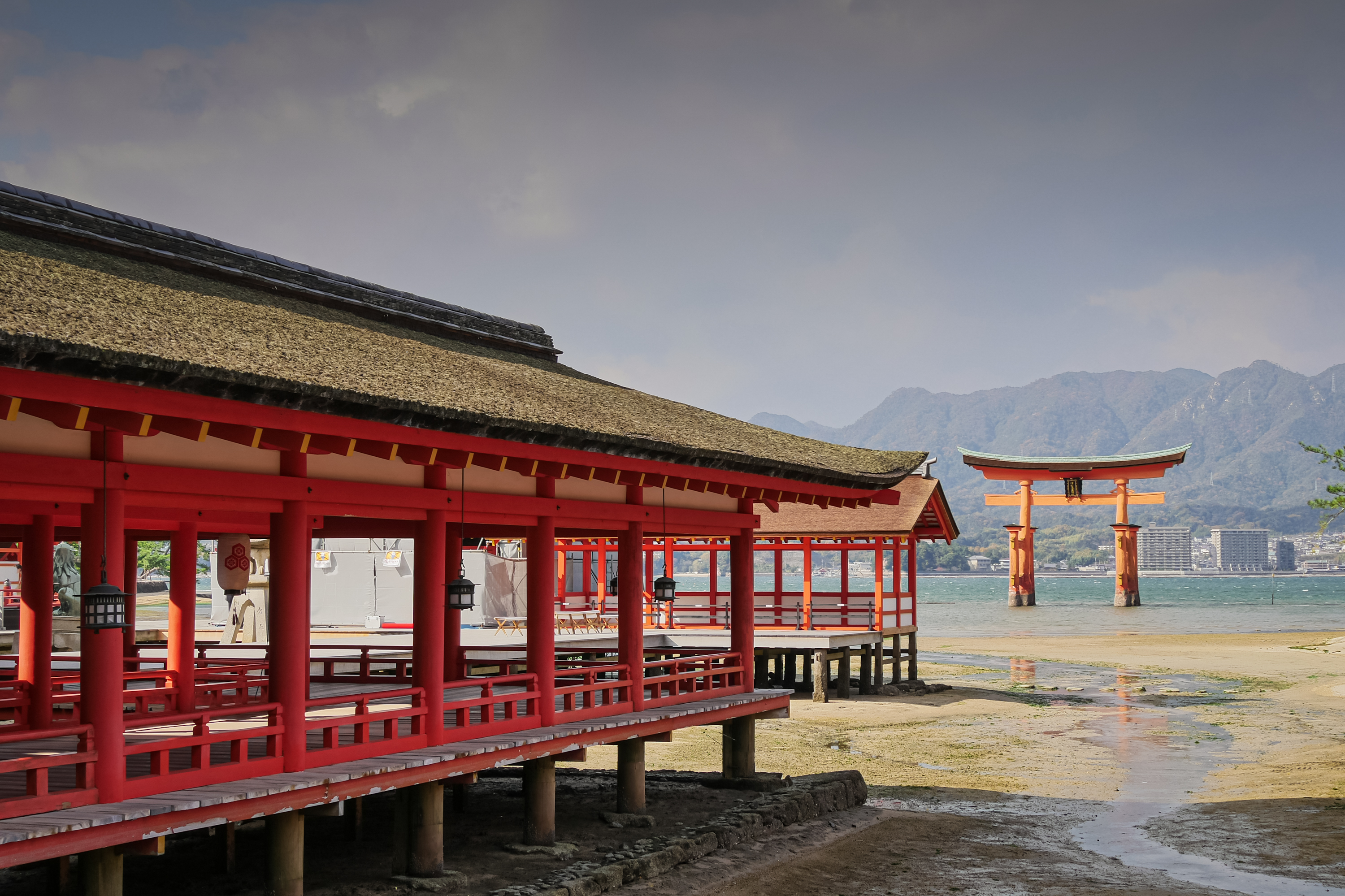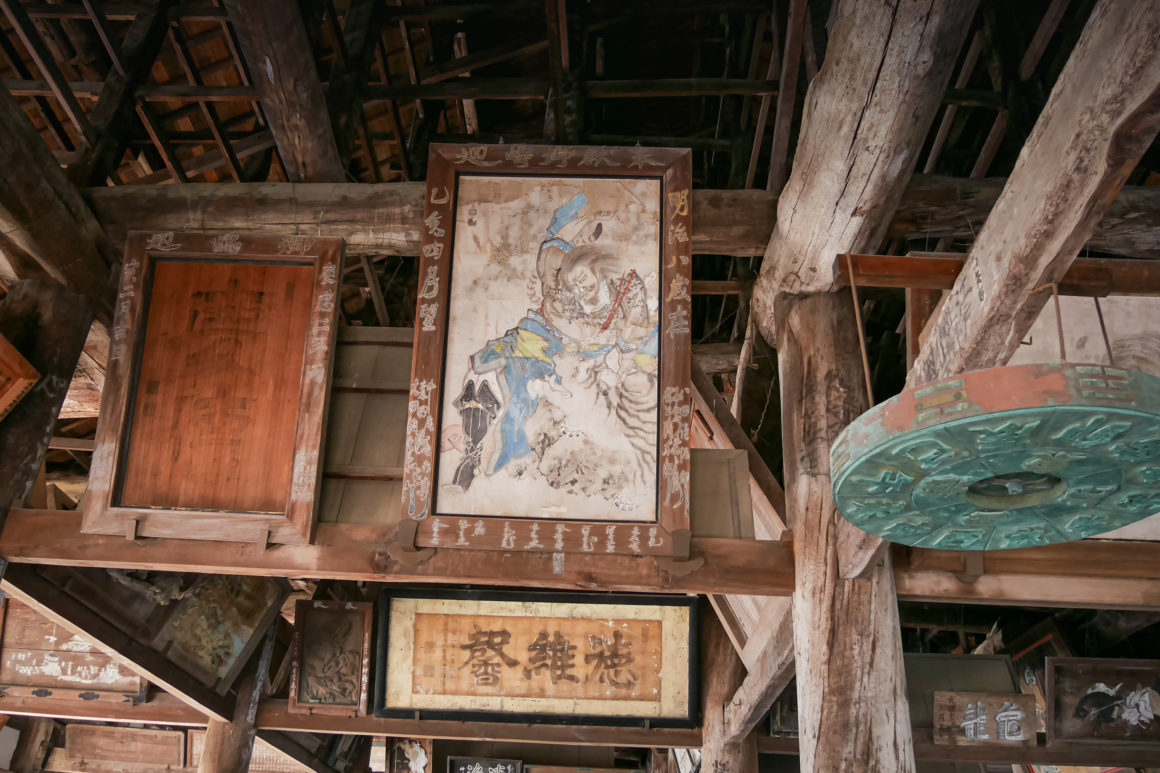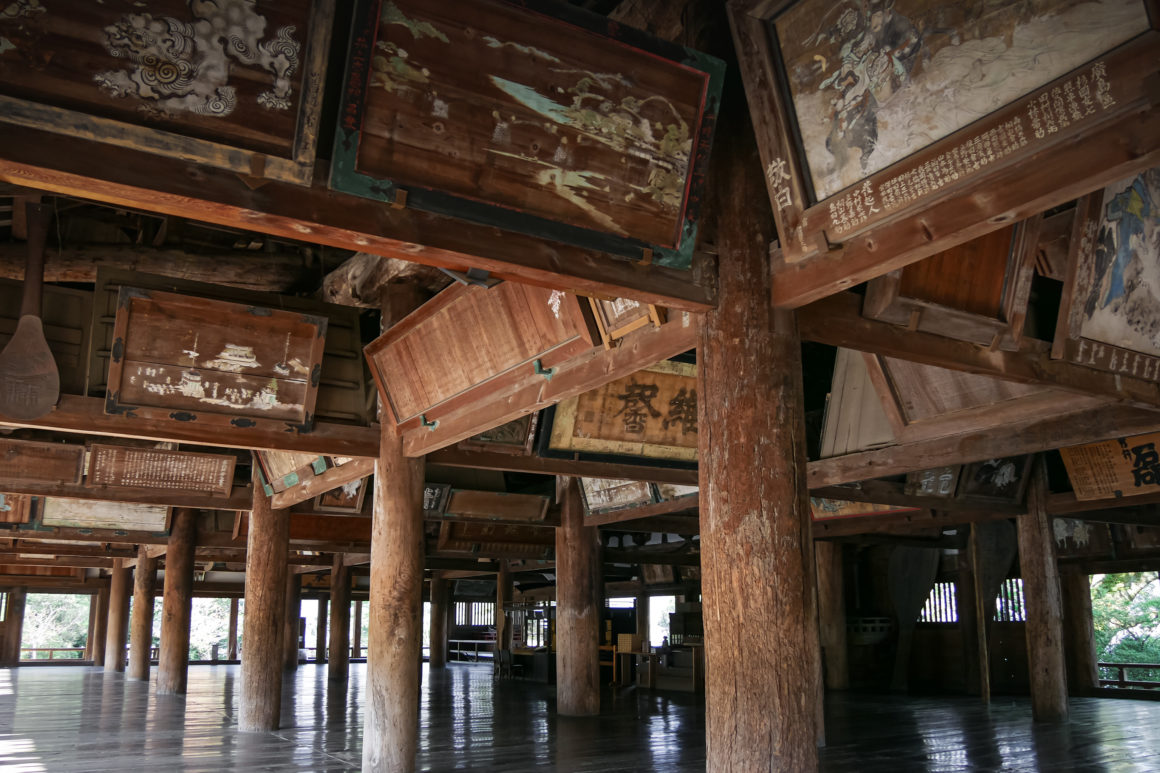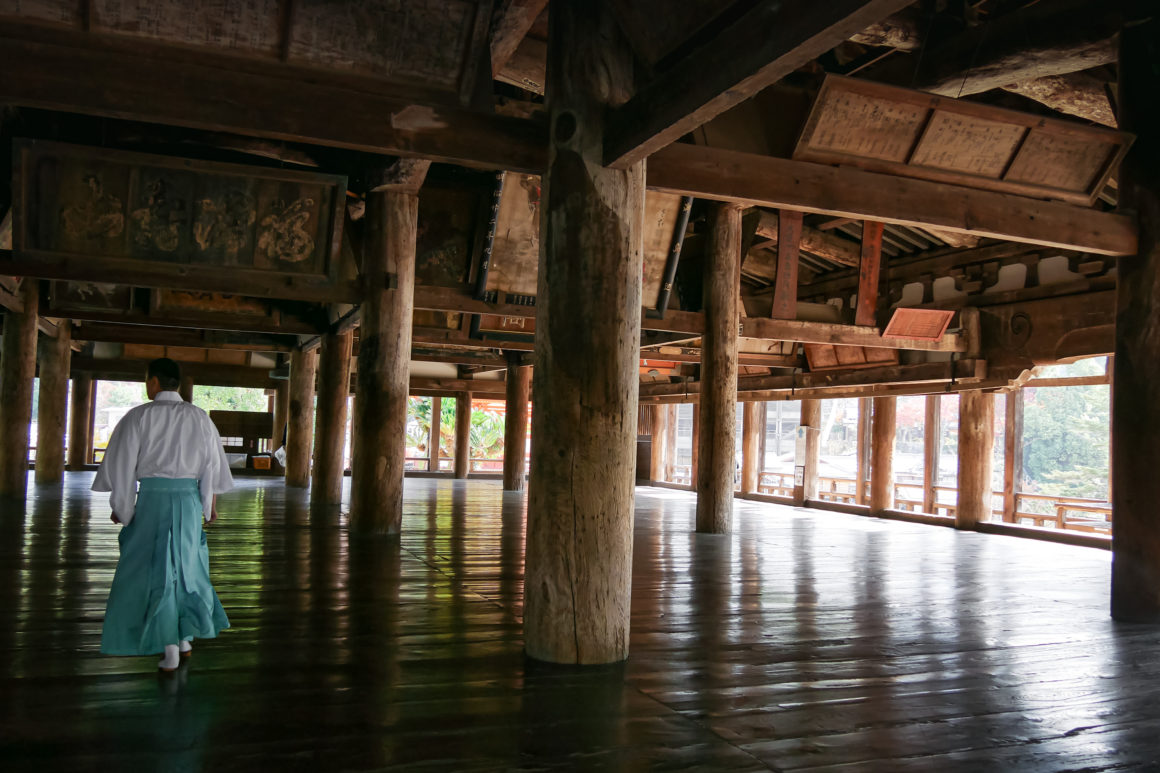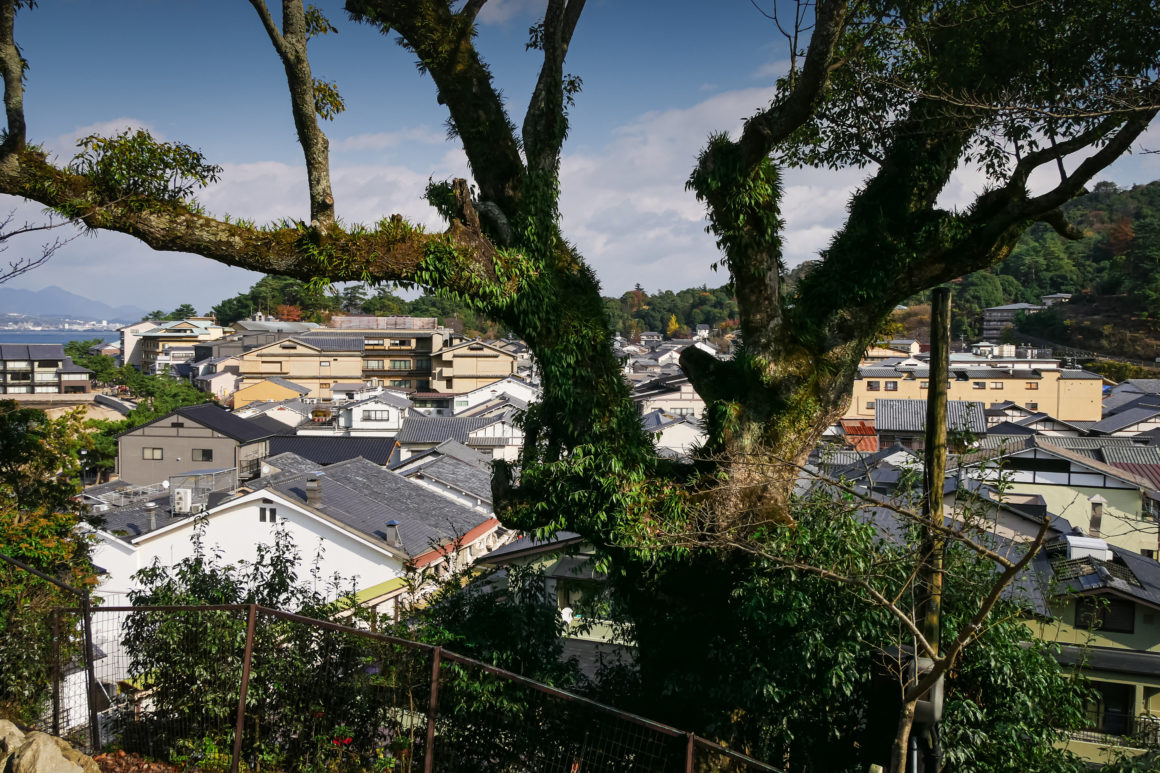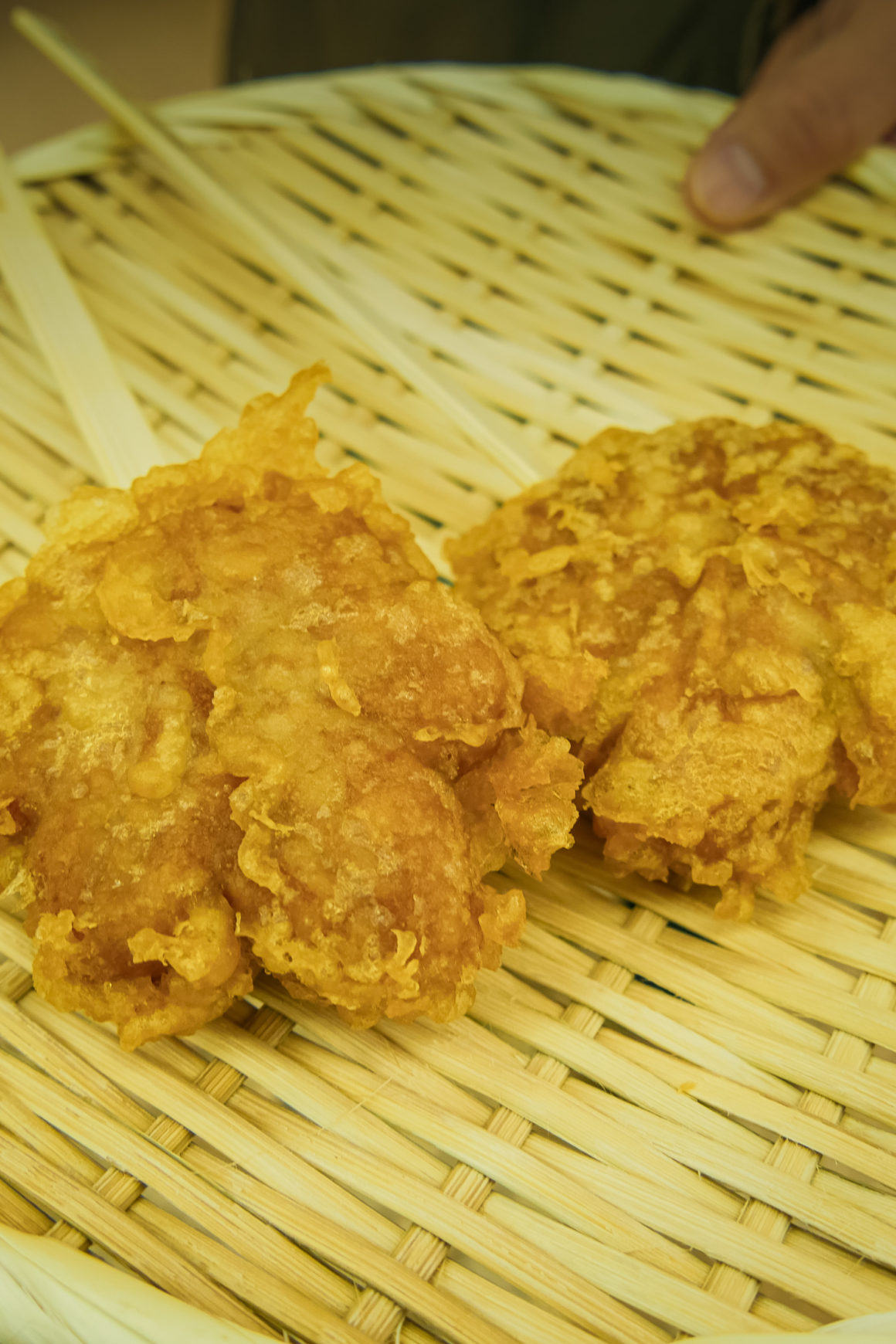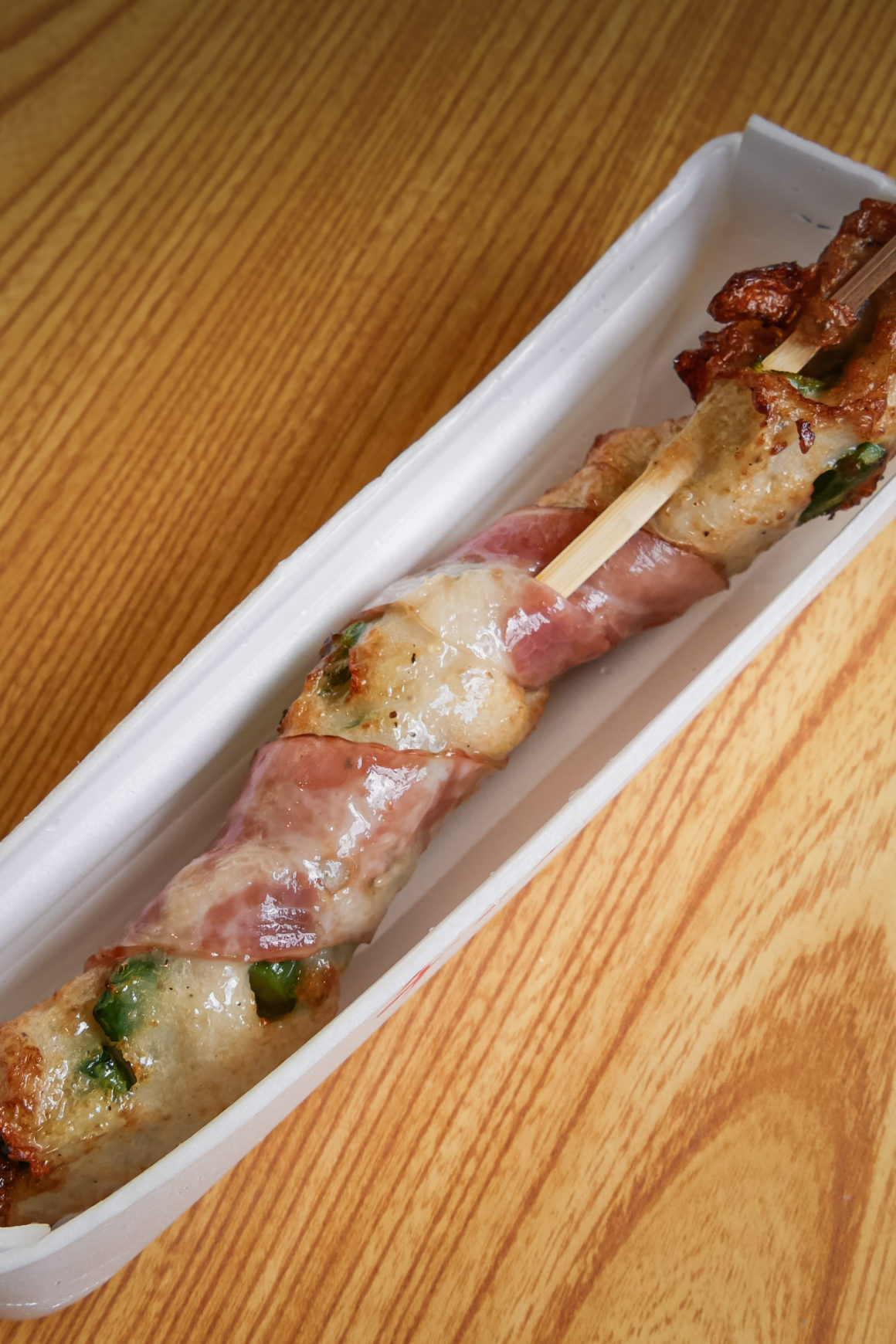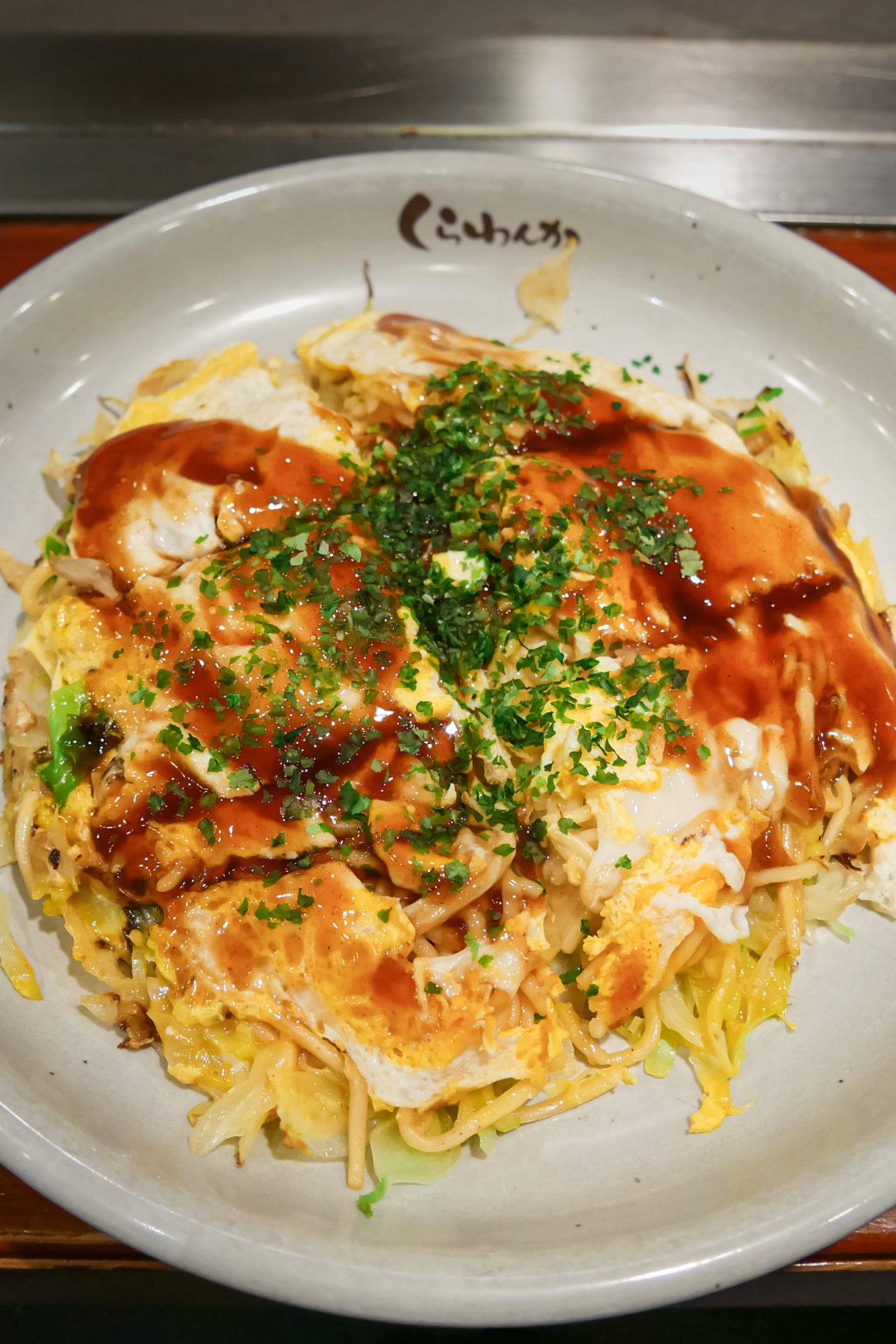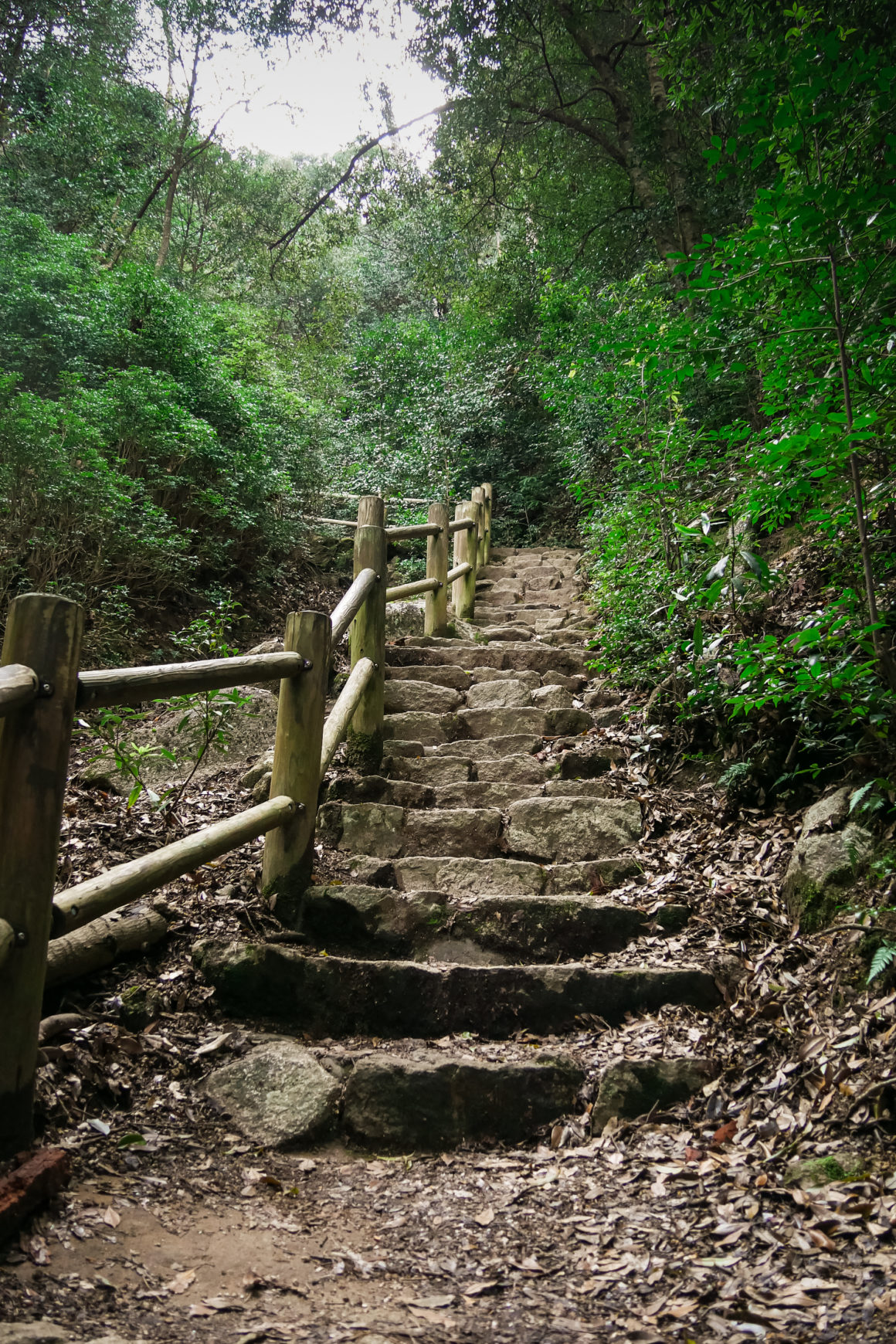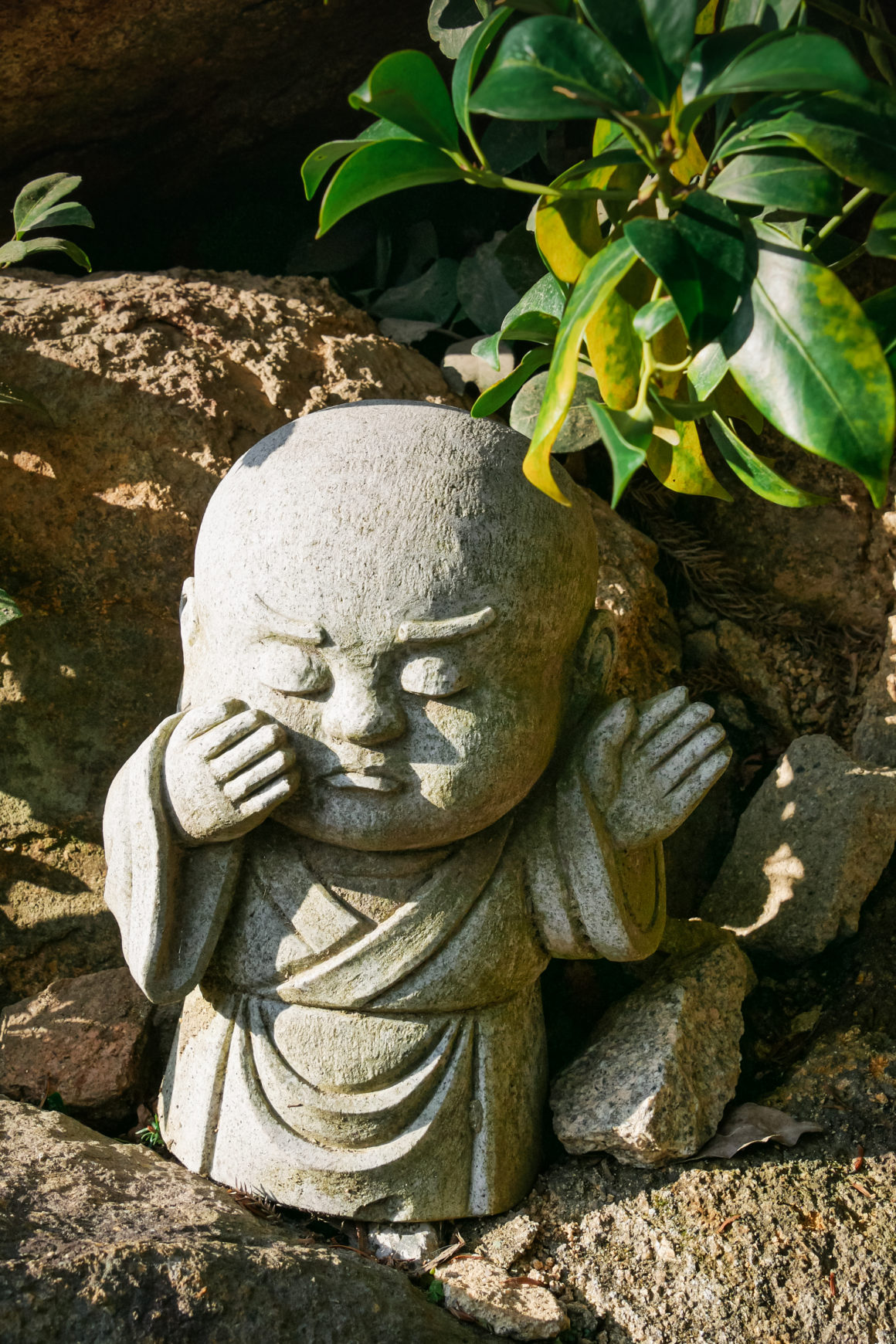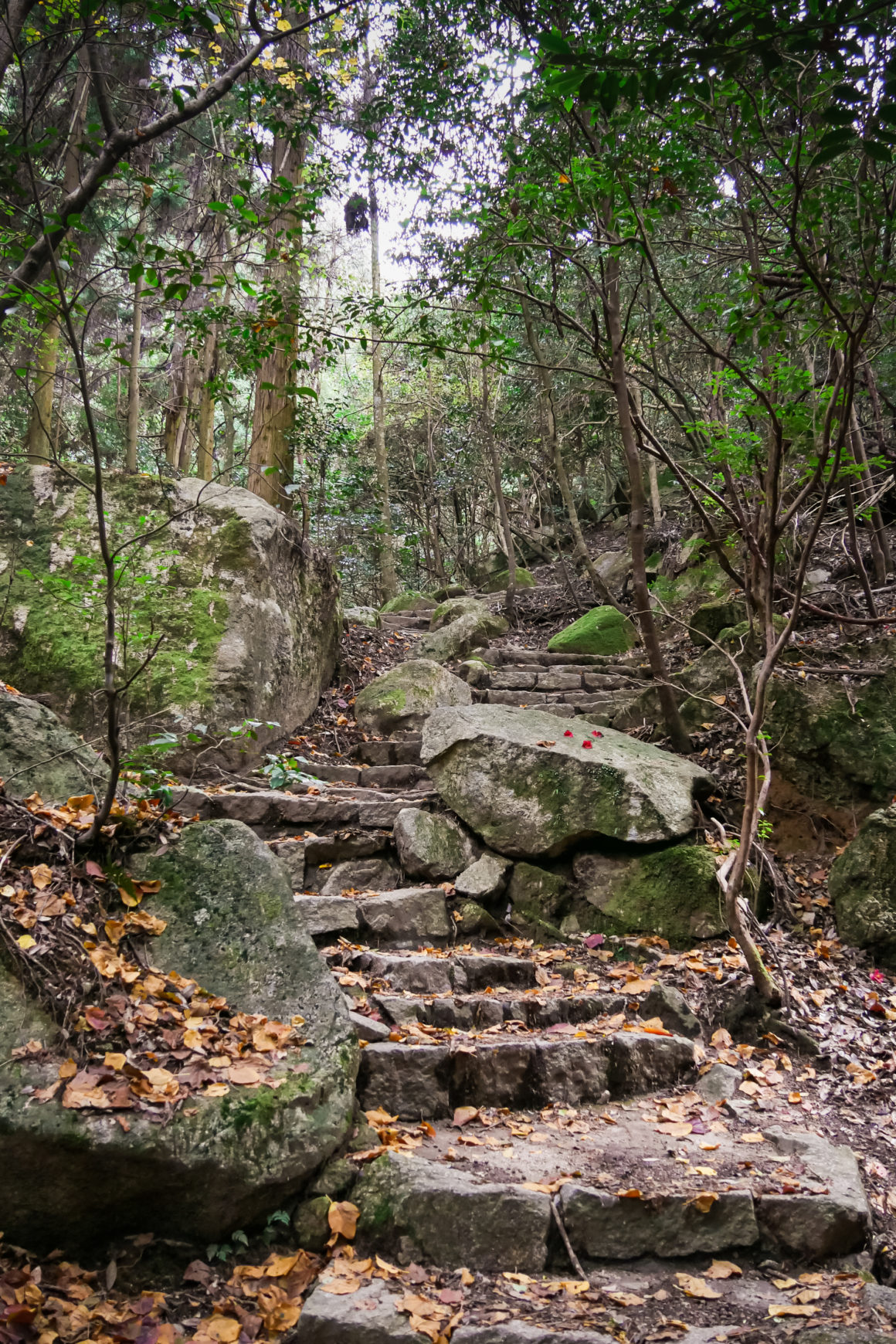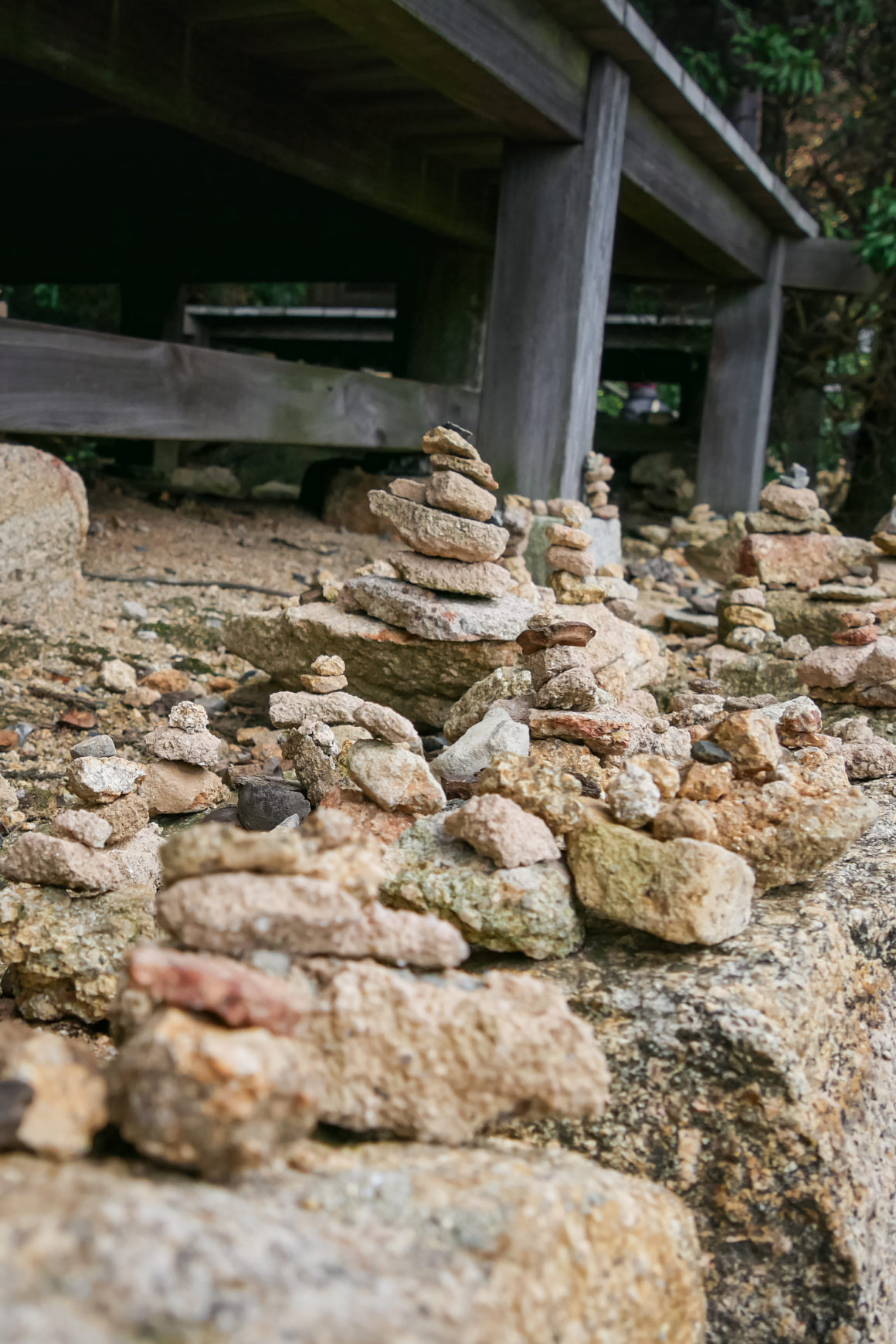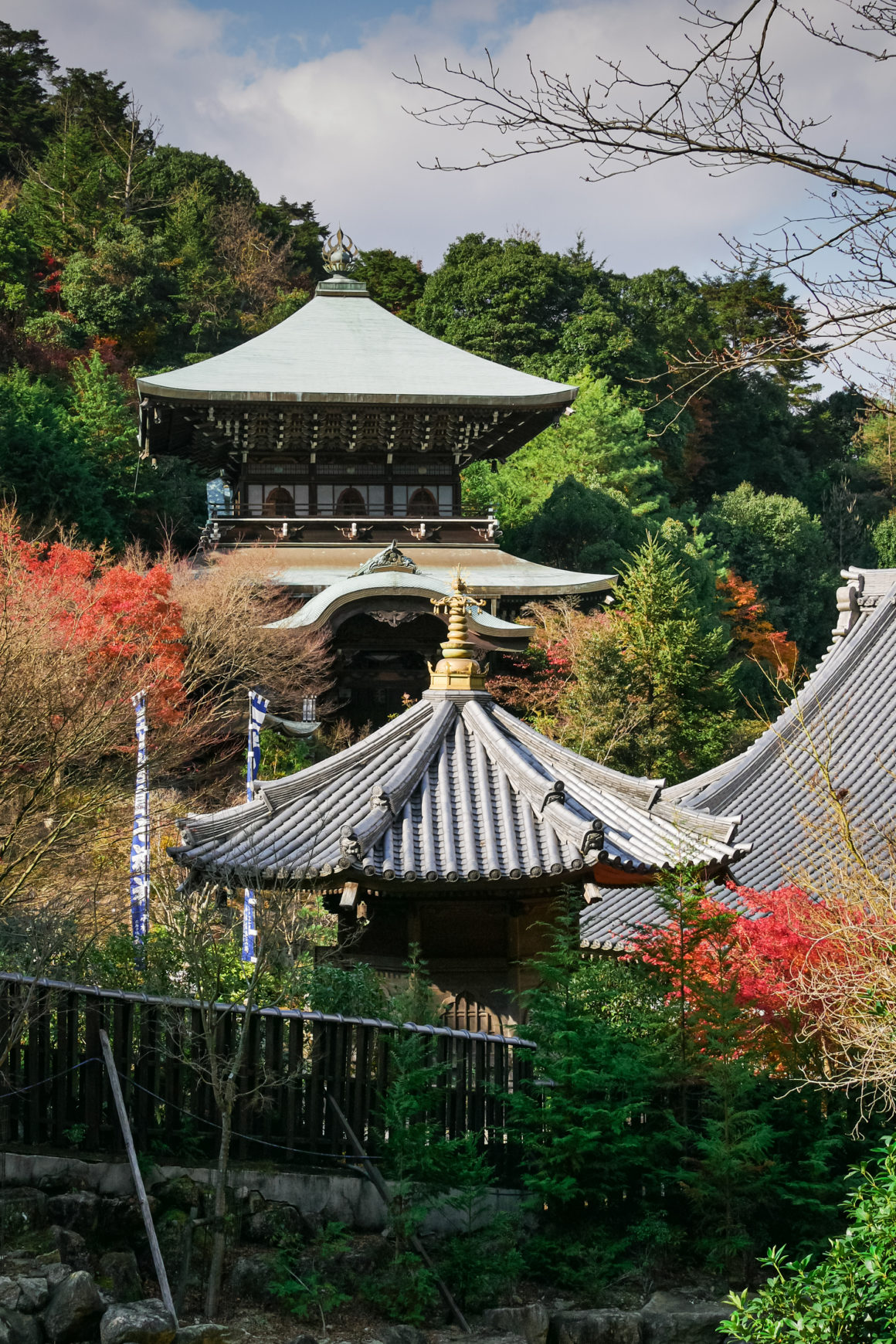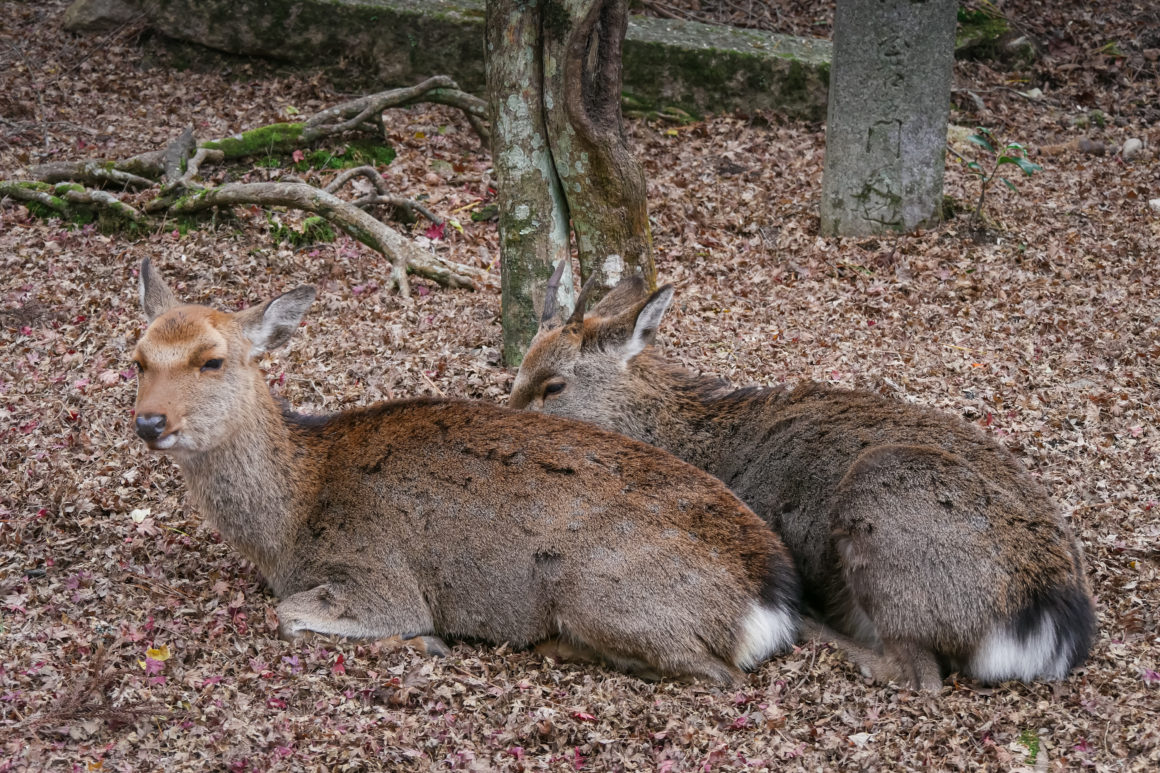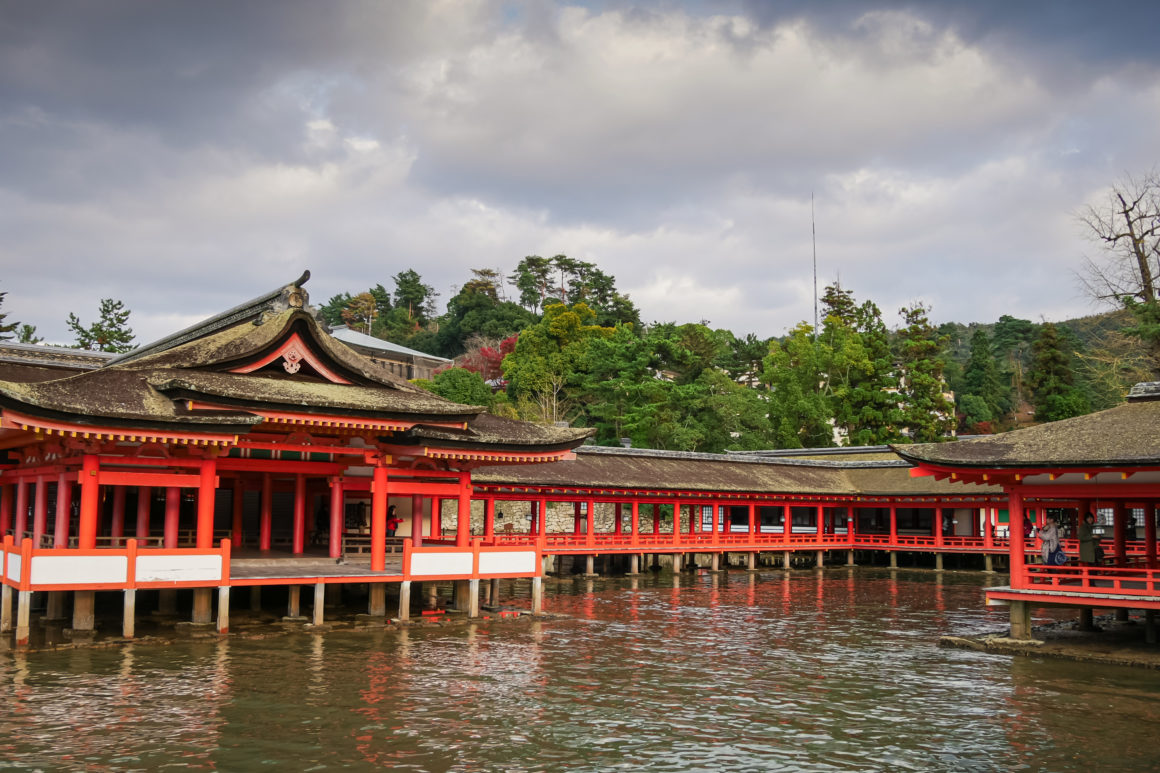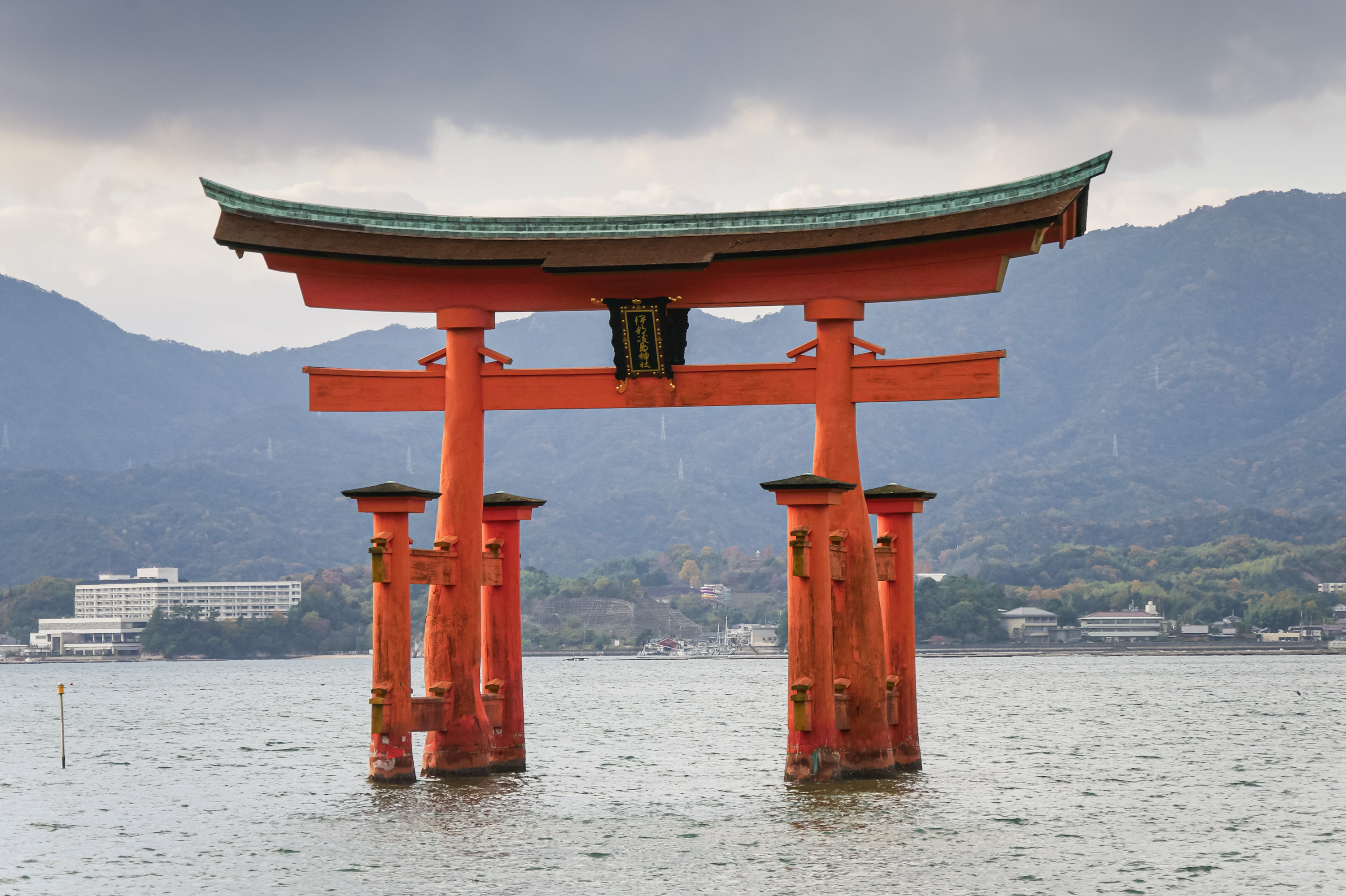DISPATCH
Friday 4 December, I get up early to visit Miyajima Island. Doris also wants to visit the island and we decide to spend the day together. Forty minutes by tram and ten minutes by ferry and here we are on the sacred island of Miyajima. It is forbidden to be born here, to die here and to cut down trees. The island is listed as a UNESCO World Heritage Site and that is understandable. The vegetation is lush and the various temples and shrines that house the island are magnificent. Rain and sun mix when we dock. A magnificent rainbow seems to draw a bridge between Miyajima and Hiroshima. The small village and the beach immediately confirm the beauty of the island. Miyajima is also home to a large population of free-roaming wild deer that wander through tourists, not afraid and permanently trying to pilfer a little bit of food. It is quite strange to see tourists being photographed with a small group of deer in the foreground.
What makes Miyajima famous is the Itsukushima Shrine and its floating torii (because it seems to float on water at high tide) located on the shore. The sanctuary dates from the 6th century. (The current sanctuary dates from 1168). Due to the sacred status of the island, visitors at the time were not allowed to set foot on land. The sanctuary was therefore built on stilts with numerous pontoons. Visitors had to pass under the floating torii and dock on the pontoons. The torii and the sanctuary are magnificent and very impressive. The architecture is remarkable and the omnipresent red color contrasts with the blue of the sky and the green of the mountain. Doris and I walk through the sanctuary feeling like we are in the past. The sacred aspect of the island seems to be physically present alongside us.
A very rounded traditional bridge (it must have been difficult to climb over it!) Appears around one of the temple buildings and I have the impression of being in the movie Spirited Away (by master Hayao Miyazaki). One of the objectives of my trip to Japan is to try to find in reality the famous bathing establishment of Yubaba, the film’s matron. At least I have already found the bridge. All that is missing is the building and youkai everywhere and that will be good.
We also come across a traditional wedding which is held within the sanctuary and open to the public. The bride wears an all-white kimono and a very large headdress. Three musicians play traditional tunes using a small flute and a mouth organ (the deepest man in the picture). An officiating monk and young maids take care of bringing things or serving drinks. The ceremony is very formal and not so joyful.
Traditional wedding
We also visit Senjô-kaku, a huge building built in 1587 by Toyotomi Hideyoshi (one of the unifiers of Japan during the Sengoku period, period of military conflicts and social turmoil in Japan which stretched from the middle of the 15th century to the end of the 16th century). The building, a huge open hall, was constructed so that each month Buddhist sutras were sung there to console the souls of soldiers who died in war. The place is impressive for its size and its entirely wooden structure. Magnificent old paintings are hung on each frame of the ceiling. I stroll for a long time among the gigantic pillars, letting me soak up the atmosphere of the place. Completely open to the outside, Senjô-kaku also offers a nice view of the village of Miyajima. A five-story pagoda is also seen next door.
Doris and I then go in search of a meal. A walk among the main shopping and therefore tourist alley of the village allows us to taste different specialties of the island: Momiji Manju, small cakes in the shape of a maple leaf (momiji in Japanese) filled with red bean paste and fried, a pure delight! (Later in the day, I also tested the versions filled with cheese and cream, it is also very good!). Momiji cakes are found all over Japan, but the “fried” version is specific to Miyajima. Next stop at a skewer and oyster stand. I test a bacon-asparagus skewer. Not bad but not great either. We finish our culinary stroll in a small restaurant serving Okonomiyaki. These are kinds of omelettes or pancakes filled with various ingredients. Those of Miyajima are made with noodles. It is very good.
Satisfied, we attack the ascent of Mount Misen, 530m above sea level. The climb in the lush forest is very beautiful but the path is made of stairs! 530m of uphill stairs is no easy task. Fortunately the climb only takes us an hour (against the hour and a half indicated on the sign at the start of the climb). The view from the top is very beautiful, especially since the weather has completely cleared. You can see the surrounding islands and almost see Shikoku island on the horizon. A pretty little temple is located not far from the top. Lost in the middle of the forest at an altitude of 500m, the place is a bit unreal. We descend by the other side to reach the level of Itsukushima shrine again. It is high tide and the torii and the sanctuary have their feet in the water. We stay with Doris on the island until nightfall and then take the ferry back to the shore of Hiroshima. Dinner in a small restaurant for a traditional meal and we leave, since I sleep this evening in another guesthouse just next to the ferry port for Miyajima. (The guesthouse will prove to be much less friendly than that in Hiroshima where I spent my two previous nights, which is a bit of a shame).
This day was really a success. The island of Miyajima is really beautiful and I had the opportunity to spend a whole day discussing a lot of different things in English with a young Chinese girl who was very friendly and have the same affinities as me. Thank you Doris for crossing my path!

